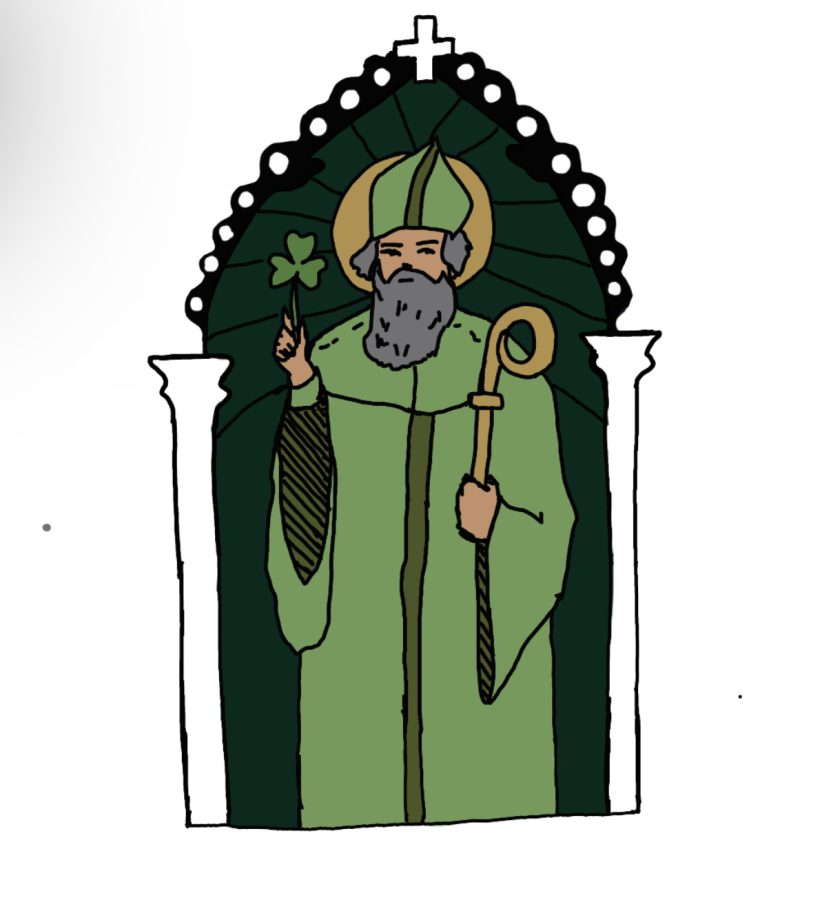The Origin of St. Patrick’s Day
May 3, 2023
When you think of Saint Patrick’s Day, a few things that may come to mind include the color green, parades, leprechauns, and shamrocks. At least in America, the celebrations mostly appear as stereotypical representations of Ireland as a nation. However, all those aspects have very little to do with the origin of the holiday.
So, where did Saint Patrick’s Day come from? Saint Patrick’s Day celebrations were started to honor Saint Patrick, who lived in the fifth century. Born in Roman Britain, St. Patrick was brought to Ireland as a slave when he was 16. Although he managed to escape, once St. Patrick became an adult, he went back to Ireland as a priest to bring Christianity to the country. Legend says he used the three leaves of the traditional Irish clover to explain the phenomenon of Father, Son, and Holy Spirit.
In 1631, in Ireland and in the years following, celebrations of St. Patrick’s death were typical to honor him. These celebrations included going to church in the morning and having a feast of traditional Irish bacon and cabbage. St. Patrick’s Day celebrations were first introduced in America in 1762, as an Irish soldier serving in England’s military marched to honor Saint Patrick in New York City. The parade consisted of a small band of mostly bagpipes and the British military stationed in New York at the time. From that point, excitement at the idea of St. Patrick’s Day only increased in highly populated cities of the United States. Many American immigrants became very invested in Irish patriotism, forming so-called “Irish aid” groups who would entertain crowds with their annual parades, often with bagpipes.
As previously stated, the important elements of Saint Patrick’s Day—like the color green, the leprechauns and the shamrocks—have not always been part of the holiday. All of these elements that are the image of Saint Patrick’s Day to date, were added to the holiday throughout its continued celebrations in history. The holiday has altogether lost its original purpose, but still remains an excuse to allow feelings of Irish nationalism.
Green, a color that is generally associated with St. Patrick’s Day today, took a few hundred years to gain its importance in the March 17 celebrations. About ten years after the parades started, the Rebellion of the Irish started against the British. A song entitled “The Wearing of the Green” inspired the color theme of the holiday.
Leprechauns are another aspect of Saint Patrick’s Day added in the last few decades. Leprechauns are short, ginger-haired men who are depicted with a pot of gold at the end of a rainbow. Famous for playing tricks on you, legend says they couldn’t see green. So when green was what was worn on St. Patrick’s Day, you would be hidden from the pranks of the Leprechaun.
The Shamrock seems to be the only remembrance of Saint Patrick that remains associated with the holiday, as it was his teaching tool. The clover already spreads a feeling of Irish nationalism for Irish citizens, now reminding them of how Christianity found its way to Ireland and of the rare lucky four-leaf clovers.
Although St. Patrick’s Day was celebrated only by Ireland, it has become a proud day for Irish immigrants globally, dedicated to remembering their home country. Now, not only Irish descendants but inhabitants from all over the world enjoy Saint Patrick’s Day.
This article also appears in our March 2023 print edition.










